Chili - The Spice of Life
Chili, a beloved spice used worldwide, is a versatile ingredient that adds depth, flavor, and heat to any dish. Known for its rich, spicy kick, chili peppers come in various forms, including fresh, dried, powdered, and as chili sauce or oil. Whether you're an adventurous cook or someone who enjoys adding a touch of heat to your meals, chili products offer the perfect solution.
Fresh Chili Peppers are vibrant, juicy, and packed with heat. From mild to extremely spicy varieties, fresh chilies can be sliced, diced, or used whole to infuse dishes with their pungent aroma. Great for stir-fries, salsas, and curries, fresh chilies add a fresh and bold flavor to your meals.
Dried Chili Peppers are perfect for slow-cooking and flavor extraction. When dried, chilies intensify their heat and smokiness. You can use them whole, ground into chili powder, or rehydrate them to create sauces and soups with a complex depth of flavor.
Chili Powder is a staple in kitchens around the world. A blend of dried chili peppers and other spices like cumin and garlic, chili powder adds a punch of heat and a savory aroma to dishes. Perfect for seasoning meats, soups, stews, and even grilled vegetables, chili powder offers convenience without compromising on flavor.
Chili Sauces and Oils are excellent for those who prefer a ready-to-use option. These products combine chili with ingredients like garlic, vinegar, or sesame oil to create flavorful sauces and oils that elevate your dishes instantly. Whether you like it sweet, tangy, or fiery, chili sauces and oils are perfect for dipping, marinating, or adding to your favorite foods.
Enhance your culinary creations with chili – a bold, flavorful ingredient that brings spice and excitement to every meal!
-
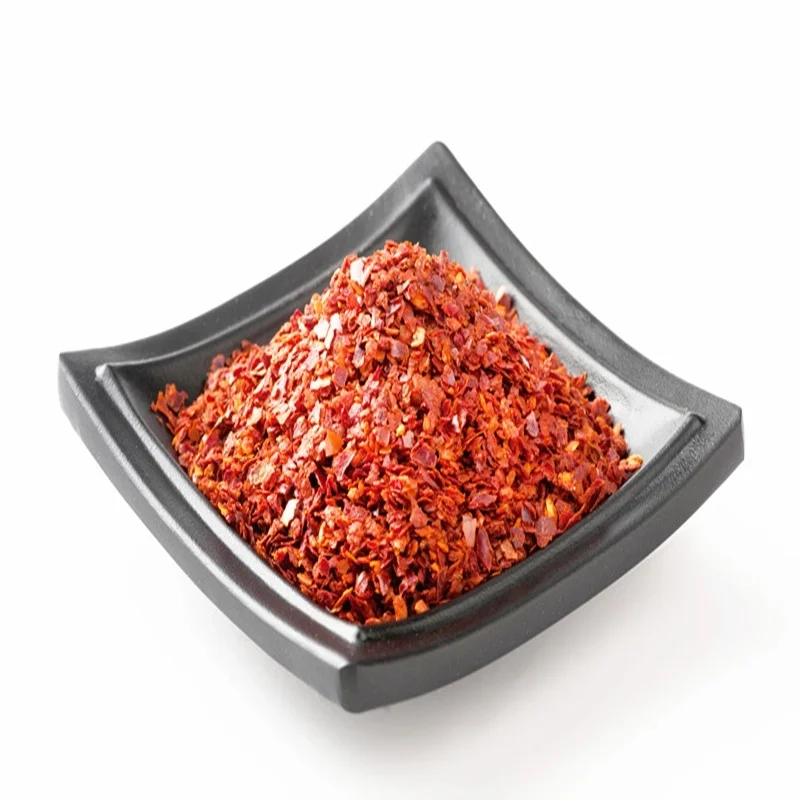
Gochugaru
2000-6000SHUIyi gochugaru ni karemano 100% nta nyongeramusaruro, ibicuruzwa byacu nibyiza muguhitamo, cyane cyane muri kimchi izwi cyane yo muri koreya. Twizewe nibirango byinshi bya koreya ya kimchi, gochugaru yacu yemeza ukuri kandi izamura uburyohe gakondo. Uzamure uburambe bwawe bwo gutoranya hamwe na premium Gochugaru - guhitamo kwiza kubashaka ubuziranenge butavogerwa mugukora ibyokurya byoroshye kandi byukuri bya koreya. Shakisha ishingiro ryimigenzo gakondo ya koreya hamwe na gochugaru yacu idasanzwe, aho ubuziranenge buhura numurage ukungahaye wo gutoragura ibyiza.
-
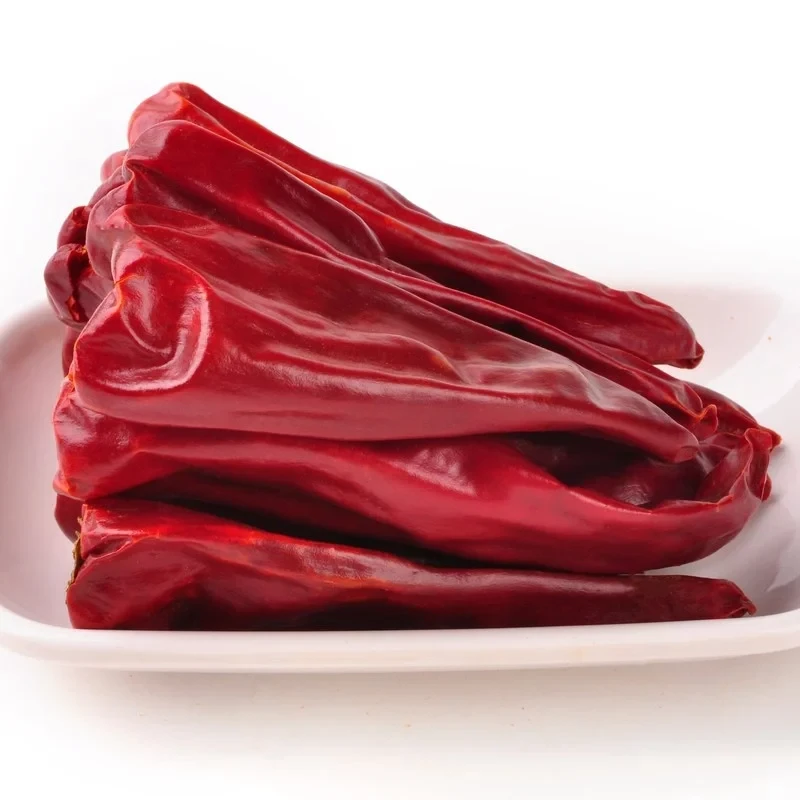
Yidu Chili
3000-5000SHUIyi Yidu chili yumye yatoranijwe neza kandi yumishijwe n'izuba, irinda imico karemano hamwe nuburyo gakondo bwo kubyara, bikavamo ibiryo byiza cyane. Nibisanzwe 100% nta nyongeramusaruro, irimo ibara ritukura rifite imbaraga, uburyohe budasanzwe, ibirungo bihoraho, hamwe nubwiza buhebuje. Ikora nkibihe byiza byubundi buryohe, butuma abaguzi bahindura urwego rwibirungo mubiryo byabo ukurikije ibyo umuntu akunda. Imico yihariye Yidu chili yacu yumye ituma ihitamo byinshi kandi ishimishije kubakunda guteka.
-
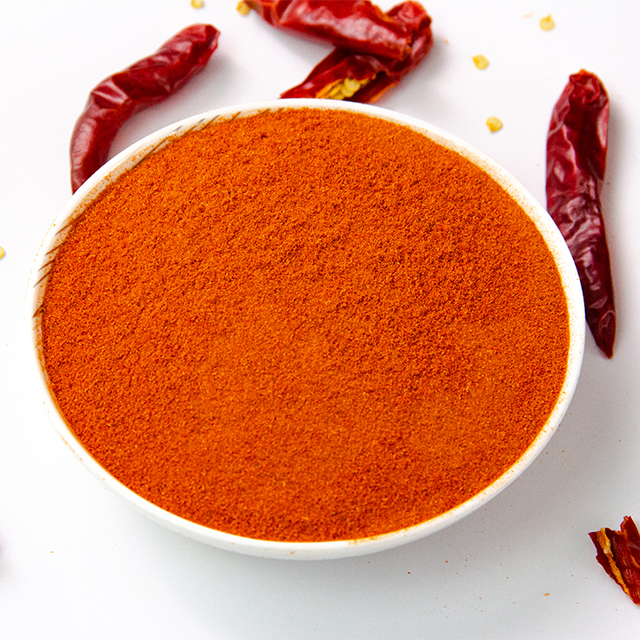
Ifu ya Chili-10,000-15,000SHU
10,000-1,5000SHUIfu ya chili ni ibirungo byiza cyane byongeramo uburyohe nubushyuhe mubiryo bitandukanye. Ibikomoka kuri peporo nziza ya chili, ibicuruzwa byacu byakozwe muburyo bwuzuye kugirango byuzuze ibipimo bihanitse byubwiza nuburyohe.
-
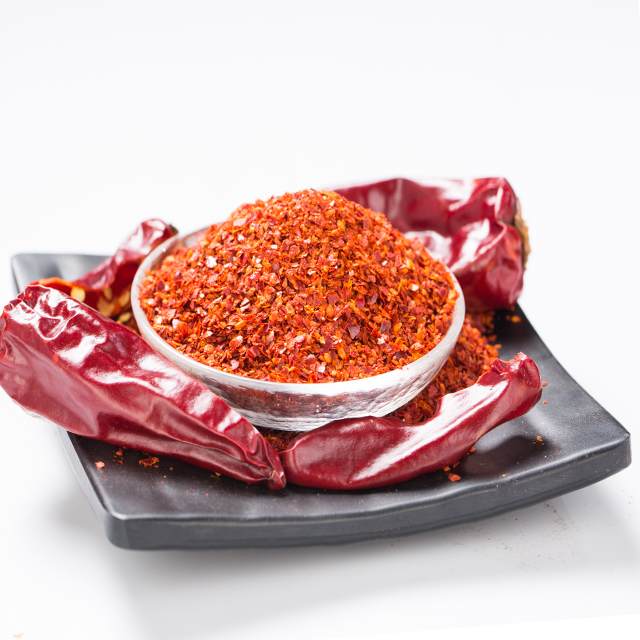
Paprika nziza
Ntabwo ari ibirungoIyi paprika iryoshye nijanjaguwe 100%, idafite ibibara, ibumba, na Sudani Itukura. Ibicuruzwa byacu byemeza ubuziranenge no kuba indashyikirwa, byemeza neza uburyohe bwibiryo byawe. Niba nta nenge kandi igenzura ubuziranenge, ihagaze nkuguhitamo kwizewe kubakunda guteka. Uzamure ibyokurya byawe hamwe nibihe byiza bya paprika yajanjaguwe, utange ubuziranenge butagereranywa kandi wongeyeho imbaraga, utagira ikizinga kubyo ukunda. Izere ubuziranenge bwibicuruzwa byacu kuburambe bwiza kandi bwiza.
-
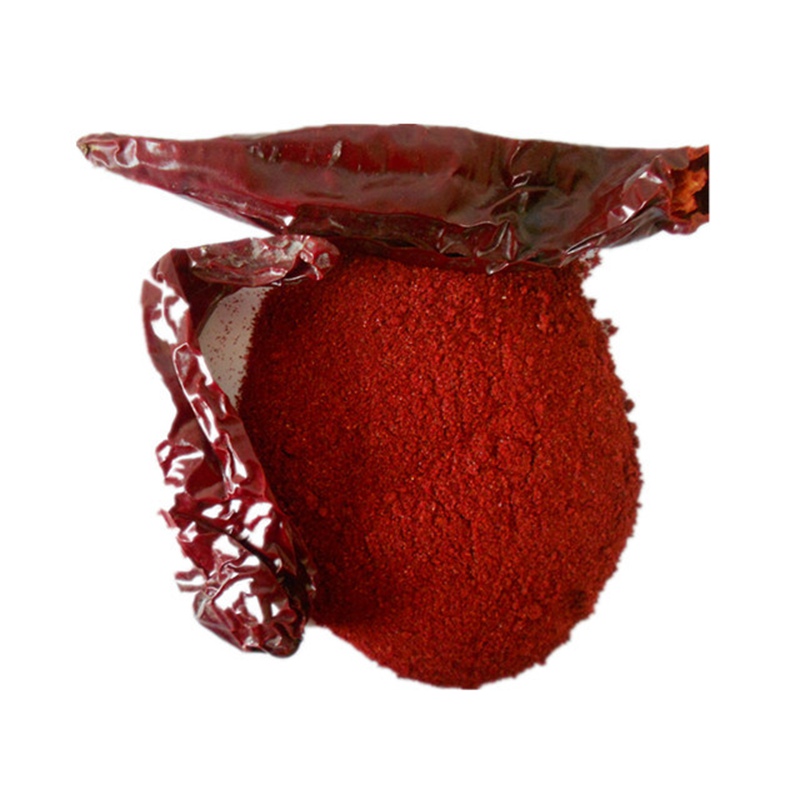
Ifu nziza ya paprika
Ntabwo ari ibirungoIfu ya paprika nziza ni karemano 100% nta nyongeramusaruro, igaragaramo ibara ritukura rifite imbaraga, uburyohe budasanzwe nubwiza buhebuje. Nibirungo bitarimo ibirungo bishobora gukoreshwa mukuzamura ibara ryibiryo, bigatuma bikundwa cyane. Imico yihariye yifu ya paprika nziza ituma ihitamo byinshi kandi ishimishije kubakunda guteka.
Ifu nziza ya paprika itanga amahitamo yihariye y'amabara atandukanye, hamwe no gupakira. twiyemeje gukemura ibibazo bitandukanye bikenewe.
-
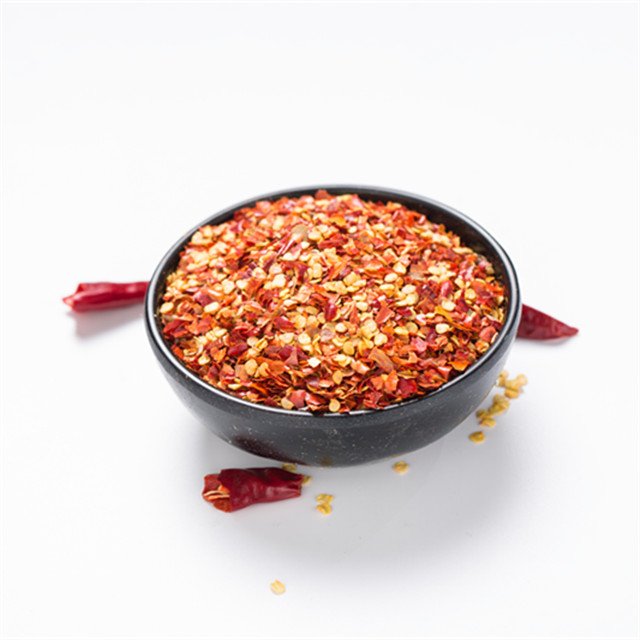
chili yajanjaguwe-40.000-50.000SHU
40.000-50.000SHUUruganda rwacu ni ihuriro ryibintu bishya, bitanga ibicuruzwa bitandukanye, birimo pepper itukura yajanjaguwe, ifu ya chili, chili yumye, uduce twa chili, namavuta ya chili. Ibicuruzwa byacu byinshi byujuje ibyokurya bitandukanye, kuva kongeramo umuriro wumuriro kuri pizza na makariso kugeza gushiramo uburyohe bukungahaye mubisupu nisupu. Buri gicuruzwa kiri mu cyegeranyo cyacu cyabonye icyemezo cy’icyubahiro cy’ubumwe bw’ibihugu by’Uburayi, gihamya ko twiyemeje kutajegajega ubuziranenge. Uzamure ibiryo byawe hamwe nibirungo byacu bihebuje, byakozwe muburyo butandukanye kandi byukuri, urebe uburambe bushimishije kandi buryoshye muri buri gikoni.
-
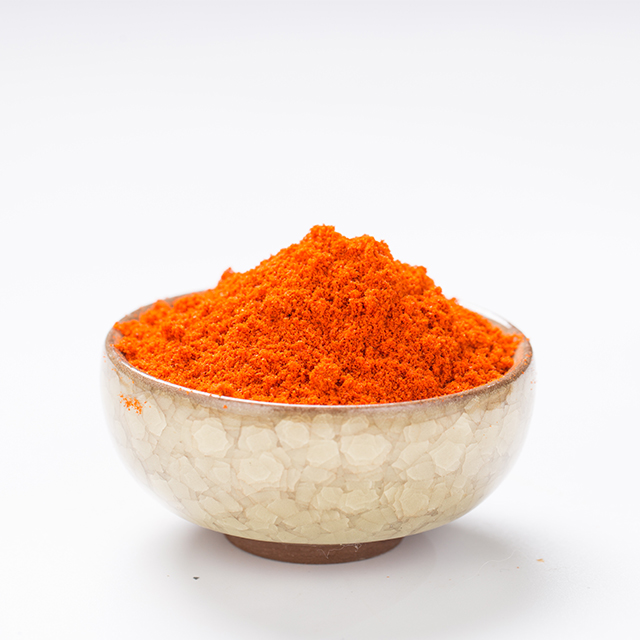
ifu ya chili-600.000SHU
60,0000SHUIfu ya chili ni karemano 100% nta nyongeramusaruro, igaragaramo ibara ritukura rifite imbaraga, uburyohe budasanzwe, spicicite ihoraho, hamwe nubwiza buhebuje. Ikora nkibihe byiza byubundi buryohe, butuma abaguzi bahindura urwego rwibirungo mubiryo byabo ukurikije ibyo umuntu akunda. Imico yihariye yifu ya chili ituma ihitamo byinshi kandi ishimishije kubakunda guteka.
Ifu ya chili itanga amahitamo yihariye kuburyo butandukanye, amabara, hamwe nububiko. twiyemeje gukemura ibibazo bitandukanye bikenewe.
-
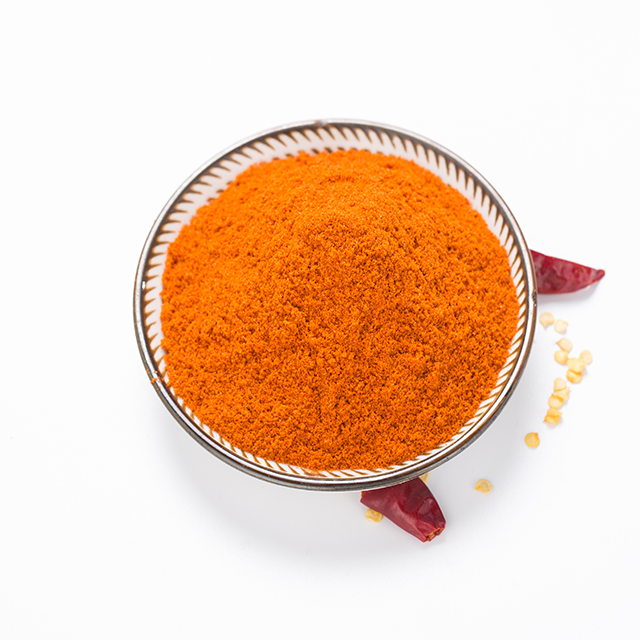
ifu ya chili-70.000-80,000SHU
70.000-80,000SHUIfu ya chili izwiho ubuziranenge bwayo, kuba yera kandi idafite inyongeramusaruro. Twishimiye gutanga ibicuruzwa birenze ibipimo, dushimwa binyuze mu kohereza ibicuruzwa byinshi muri Amerika, Umuryango w’ubumwe bw’ibihugu by’Uburayi, ndetse no mu bindi bihugu. Hitamo ifu ya chili kugirango ubone uburambe bwo guteka, burangwa nuburyohe budasanzwe no kwiyemeza ubuziranenge bwadushizeho nkumutanga wizewe kumasoko yisi.
-
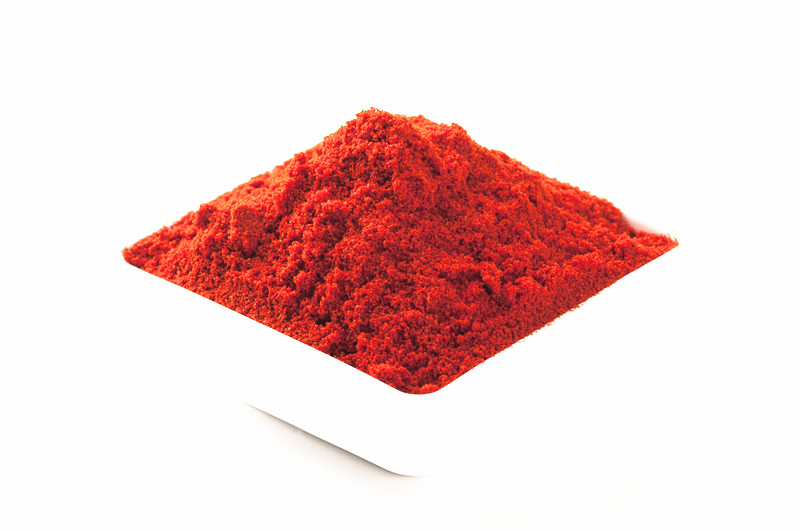
ifu ya chili-50.000SHU-60.000SHU
50.000-60.000SHUIfu ya chili igaragara nkuguhitamo bihebuje - byera, nta byongeweho, na gluten-idafite. Ibikomoka kuri pepeporo nziza cyane, ibicuruzwa byacu byemeza uburambe bwibirungo byukuri. Ubuntu butarimo inyongeramusaruro na gluten, itanga uburyo busanzwe kandi bwiza kubikorwa byawe byo guteka. Hitamo ifu ya chili kugirango uburyohe butyoroheye hamwe nibyiza byo guteka!
What Is The Trick To A Good Chili?
Chili, a beloved spice used worldwide, is a versatile ingredient that adds depth, flavor, and heat to any dish. Known for its rich, spicy kick, chili peppers come in various forms, including fresh, dried, powdered, and as chili sauce or oil. Whether you're an adventurous cook or someone who enjoys adding a touch of heat to your meals, chili products offer the perfect solution.
Fresh Chili Peppers are vibrant, juicy, and packed with heat. From mild to extremely spicy varieties, fresh chilies can be sliced, diced, or used whole to infuse dishes with their pungent aroma. Great for stir-fries, salsas, and curries, fresh chilies add a fresh and bold flavor to your meals.
Dried Chili Peppers are perfect for slow-cooking and flavor extraction. When dried, chilies intensify their heat and smokiness. You can use them whole, ground into chili powder, or rehydrate them to create sauces and soups with a complex depth of flavor.
Chili Powder is a staple in kitchens around the world. A blend of dried chili peppers and other spices like cumin and garlic, chili powder adds a punch of heat and a savory aroma to dishes. Perfect for seasoning meats, soups, stews, and even grilled vegetables, chili powder offers convenience without compromising on flavor.
Chili Sauces and Oils are excellent for those who prefer a ready-to-use option. These products combine chili with ingredients like garlic, vinegar, or sesame oil to create flavorful sauces and oils that elevate your dishes instantly. Whether you like it sweet, tangy, or fiery, chili sauces and oils are perfect for dipping, marinating, or adding to your favorite foods.
Enhance your culinary creations with chili a bold, flavorful ingredient that brings spice and excitement to every meal!
Why Are Peppers Called Chili?
The term "chili" is often used to refer to various types of hot peppers, but its origin and usage are a bit more complex. Here’s why peppers are called "chili":
1.Etymology from Nahuatl (Aztec language):
The word "chili" comes from the Nahuatl language, which was spoken by the Aztecs and other indigenous peoples in Mesoamerica. In Nahuatl, the word for pepper is "ch? lli". The Aztecs and other native groups in Central and South America cultivated and used chili peppers long before Europeans arrived, and they were integral to their cuisine.
When Spanish explorers encountered these peppers in the Americas in the 15th and 16th centuries, they adopted the Nahuatl word "ch? lli" to describe them. The term eventually made its way into other languages, including English, where it became commonly used.
2. Naming Confusion and Global Spread:
The word "chili" is used differently around the world. In many places, "chili" refers to the fruit of the Capsicum plant, which can be used fresh, dried, or powdered to add heat to food. However, when used in the context of chili con carne (the famous spicy stew), the name "chili" specifically refers to the dish made with ground meat, chilies, beans, tomatoes, and spices.
In the U.S. and many English-speaking countries, the term "chili" has become synonymous with hot peppers, especially Capsicum annuum, which includes common varieties like jalapenos, serranos, and cayennes. However, in other parts of the world, like India and some parts of Asia, the term "chili" often refers to the spicier varieties of Capsicum that are commonly used in their cuisines.
3. "Chili" vs. "Chili Pepper":
In the 17th century, when Christopher Columbus brought the peppers back to Europe, they were initially thought to be a type of pepper (which they resemble in taste and appearance). The name “pepper” had already been used to describe the spicy fruit of the Piper nigrum plant (black pepper), and this led to the widespread use of the term "pepper" for the Capsicum family, despite them being botanically unrelated. Over time, the term "chili pepper" was adopted in many languages to differentiate the spicy peppers from black pepper.
In this sense, "chili" became shorthand for chili pepper, the pepper that imparts heat, especially from the Capsicum family, which includes many varieties of peppers that vary in heat intensity.
4. Cultural Influence and Usage:
The spread of chili peppers around the world, particularly after the Columbian Exchange (which was the exchange of plants, animals, and cultures between the Americas and the Old World), played a significant role in shaping global cuisine. As chili peppers became more commonly used in a wide range of dishes, the name “chili” was often applied to dishes and recipes that incorporated these peppers, such as chili con carne, chili oil, and chili sauce.
In summary, "chili" is derived from the Nahuatl word for pepper, "ch? lli", and has evolved in usage due to its widespread adoption in cuisines around the world. It’s used to refer to both the pepper itself and the dishes made with it, particularly those that are spicy and contain peppers.








